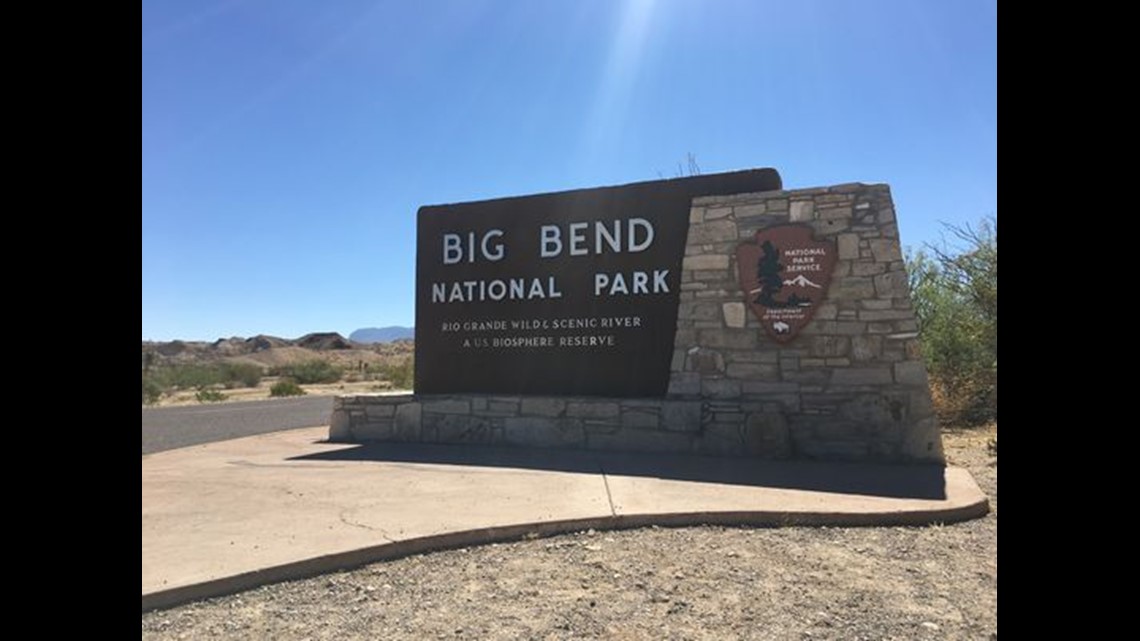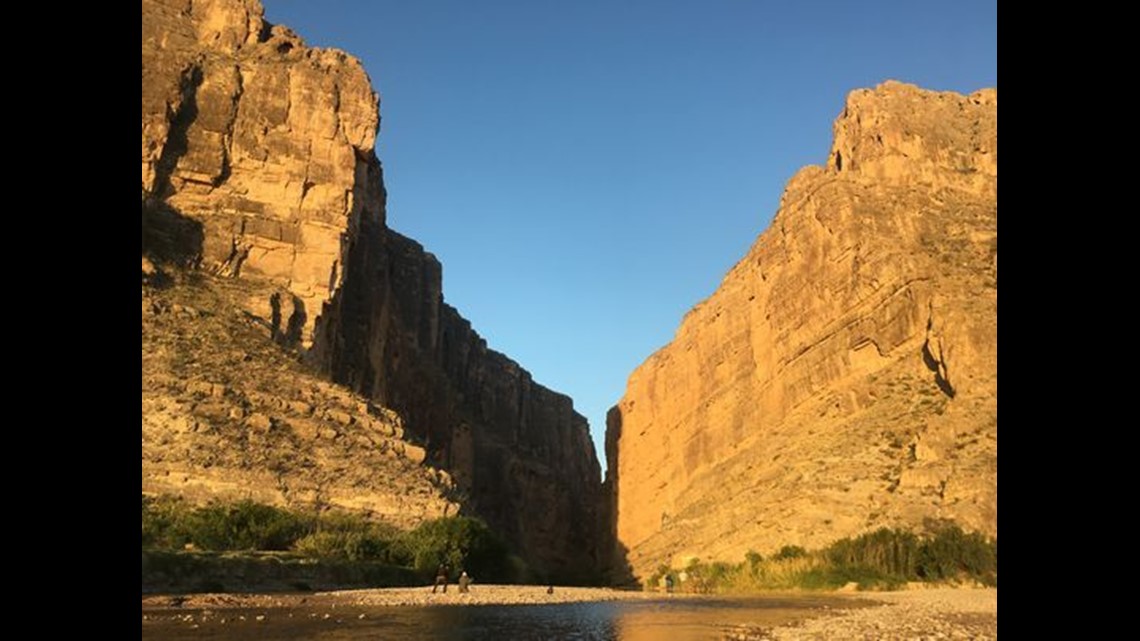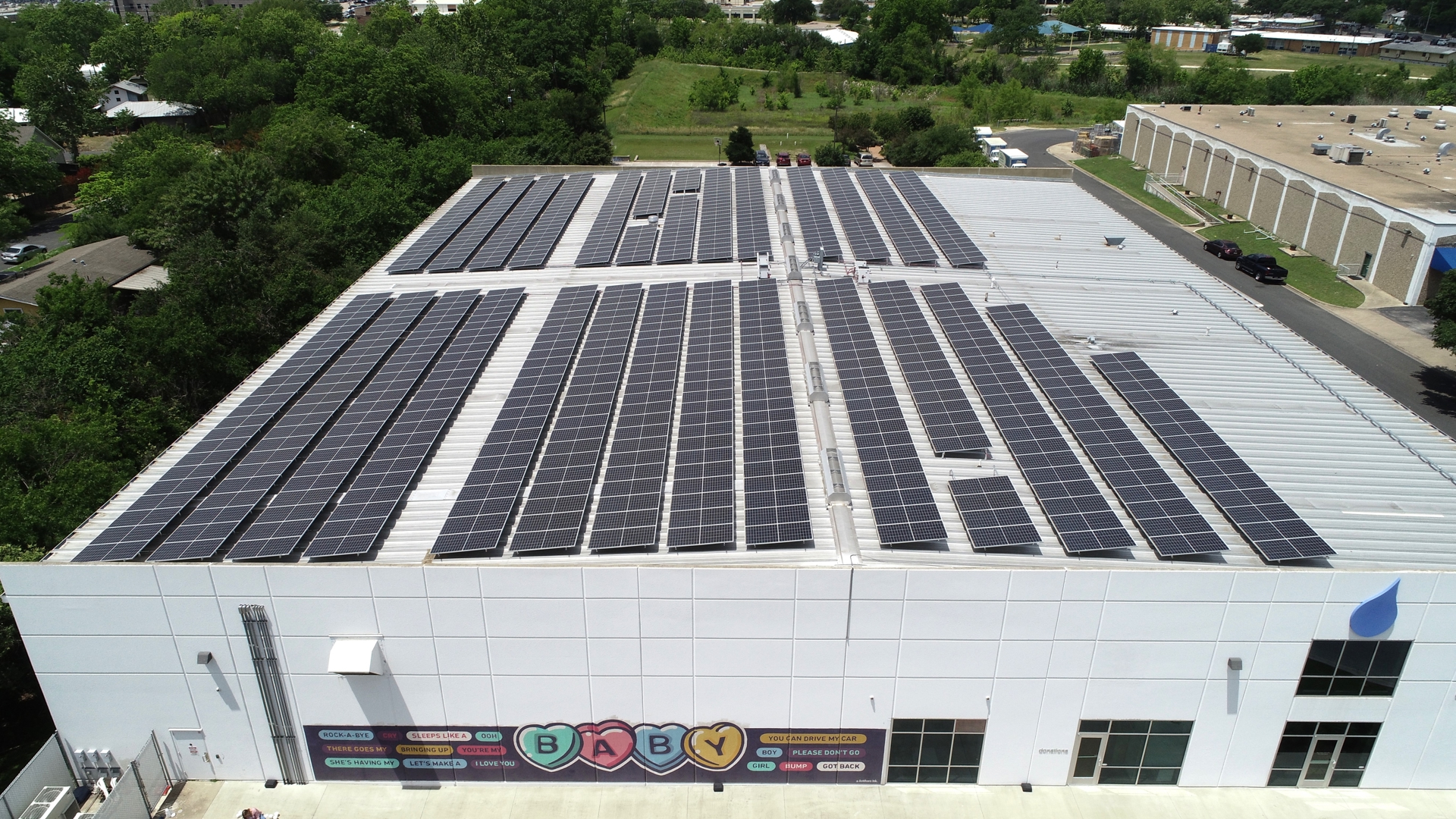Visitors flock to this sprawling park straddling the U.S.-Mexico border for the soaring, coral-colored cliffs of Santa Elena Canyon, the jagged contours of the Chisos Mountains and the bright flora and endless terrain of the Chihuahuan Desert.
If President Trump's political promises are realized, a 30-foot-tall concrete border wall may soon slice through sections of this idyllic landscape, disrupting a delicate ecosystem and creating an eyesore in what’s considered one of Texas’ most treasured terrains.
That possibility has provoked a wave of activism rarely seen in the sparsely populated desert towns on the park's edge.
“Many, many people have put their whole careers working out here, preserving and protecting this area,” said Marcos Paredes, a retired park river ranger who spent 25 years patrolling the Rio Grande, the river that separates Mexico from the United States.
“In one fell swoop, we stand to undo all of that with a border wall," he said.
Big Bend, a 1,125-square-mile park in Southwest Texas, abuts 118 miles of the Rio Grande – the sharp southwest U-turn in the river gives the park its name. That position puts it square in the path of the proposed border wall, a cornerstone of Trump’s campaign for president.
The budget proposed by the Trump administration last month includes $2.6 billion for border security, of which $1.6 billion would go to the construction of new and replacement walls. That's far short of the more than the estimated $20 billion it would cost to build a wall along most of the nearly 2,000-mile border with Mexico, but Trump and his administration officials have said they still intend to erect a barrier.
"We are absolutely dead serious about the wall," White House budget director Mick Mulvaney told reporters on May 23.
If federal officials wanted to put up just a few miles of wall to fulfill campaign promises, Big Bend might be the ideal place to do it, said Scott Nichol of the Sierra Club Borderlands.
The park is one of the largest stretches along the Texas-Mexico border already owned by the federal government. Most of the Texas border is privately owned, constituting one of the largest barriers to wall construction, he said. To build the wall on private land, federal officials would have to seize the land through eminent domain actions, which could mean years of court proceedings.
“Building a wall in Big Bend would be horrific,” Nichol said. “But [Trump's] planners might find it appealing because they don’t have to take anybody’s land and don’t have to go to court.”


Aside from spoiling views, park advocates say a wall could alter the park's fragile ecosystems and blemish an historic corner of the state.
When Big Bend opened as a national park in 1944, it was one of the few parks in the federal network deeded to Washington by state leaders. Its vast terrain hosts three separate ecosystems – the river, mountains and desert – and is home to more than 1,500 species of plants and an array of birds, bats, butterflies, reptiles and big-horn sheep, Park Ranger Jennette Jurado said.
“There’s a shocking amount of diversity for a desert park, all within this little square of Texas,” she said.
Big Bend is also home to Mexican black bear, which migrate back and forth over the border. The bears disappeared entirely from West Texas in the 1950s due to overhunting but, in recent years, have started repopulating the park, said Louis Harveson, director of the Borderlands Research Institute at Sul Ross State University in nearby Alpine.
A border wall could interfere with the bear’s migratory patterns between Mexico and Texas, abruptly ending this ecological success story, he said. “If there’s a wall, we really wouldn’t have black bears in West Texas,” Harveson said.
Besides the ecological and wildlife concerns, a wall here isn’t needed – the 1,500-foot high canyons at the river and miles of inhospitable Chihuahuan desert make it impractical – if not impossible – for smugglers to traverse, Paredes said.
“Logistically, it just doesn’t make any sense,” he said. “The only people who believe that a wall down here is a good idea are people who have never seen this country.”
Few people know this country better than Roger Siglin. The 81-year-old retired national park ranger lives just outside Big Bend and spends his days hiking the park's canyons and low desert low country. In his 27 years as a park ranger, his job was to enforce rules and care for the flora and fauna of parks such as Big Bend and Yellowstone. He chose to retire near Big Bend for that park's unique topography and characteristic.
He didn't imagine fighting to protect its integrity. Late last year, he and several other activists were arrested when they chained themselves to a construction fence in protest of a pipeline project near Big Bend. "This is probably the prettiest desert country in the U.S.," he said. "It's worth protecting."
Siglin's not alone. Trump's surprise election in November – and the policies he's promised that could impact the region – kicked off a wave of activism in these parts. Activists formed Big Bend Indivisible to fight the border wall and other policies and began reaching out to more established groups, such as the Greater Big Bend Coalition and the Sierra Club. Though living hundreds of miles apart, the activists stay in touch via social media sites and email.
That activism has ramped up in recent months, said Rick LoBello of the Greater Big Bend Coalition. Park rangers and officials are part of the National Park Service and must adhere to Trump's orders, he said. It's up to activist groups to advocate for Big Bend's integrity, LoBello said.


"Every Texan should be outraged that President Trump is threatening our biggest wilderness, our biggest national park, that we donated to the federal government to be part of the National Park system," he said.
Siglin, the ranger-turned-activist, said the start of construction of a wall in Big Bend would draw more widespread outrage and protest than the pipeline project. “This is one of the least developed parts of Texas,” he said. “We’d like to keep it that way.”
Jervis is an Austin-based correspondent for USA TODAY. Follow him on Twitter: @MrRJervis.



